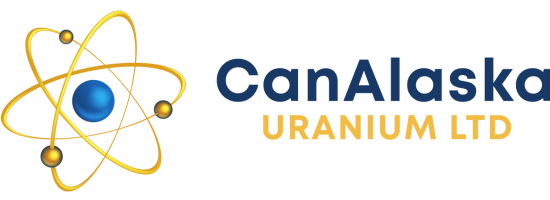Vancouver, Canada, February 6th, 2009 – CanAlaska Uranium Ltd. (TSX.V — CVV) (“CanAlaska” or the “Company”) is pleased to announce results from summer prospecting on its Poplar project. Multiple zones of uranium mineralization were detailed in basement rocks, just north of the northern limit of the Athabasca sandstone. High gold and platinum values are associated with two of the showings. The Poplar project straddles 120 km of the northern edge of the Athabasca Basin in Northern Saskatchewan.
Poplar Project Location

In 2008, CanAlaska survey crews completed over 1,500 line-kms of shallow seismic profiling over the northern portion of Lake Athabasca, detailing the edge of the Athabasca sandstone, and the features surrounding numerous airborne conductors discovered by the previous season’s airborne (VTEM) geophysical surveys.

Prospecting during summer 2008 included work on 13 new and historical uranium showings located along the north shore of Lake Athabasca. These showings are hosted in various rocks of the Murmac Bay Group and a series of granites. The assay results for the samples collected from these zones are reported below.
There are three significant areas of mineralized showings (See Figure 2). Within these areas, two types of mineralizing styles are recognised:
Metamorphic re-concentrations in pegmatitic to granitic rocks with a low U/Th ratio; these showings contain less than 1 % U3O8.
Hydrothermal vein-type showings in a variety of rocks with a high U/Th ratio; these showings contain distinctly higher U3O8, reaching over 50% U3O8.
The Felix Bay, Sharp Bay, Adair Bay, McIntosh Bay, and Natukam Peninsula target areas are all in the second, higher-grade mineralized group. Additionally, significant rare earth mineralization was observed at Adair Bay in granites/pegmatites associated with the showing (see map).
The gamma spectrometry survey conducted over the central land portion of the Poplar Project shows a high total count and high uranium background over most of the area. This high overall uranium signature, together with the two types of mineralization, form good precursors for unconformity uranium deposits in areas of the project to the south.
The 2008 airborne EM and waterborne seismic surveys which covered the southern portion of the Poplar project defined a large number of structural events and zones of high conductivity and disruption in the sandstone cover. The data from these surveys is currently being compiled by CanAlaska personnel. There is strong evidence of structural dislocation of these conductors, especially in the area of the Felix Bay uranium-gold-platinum mineralization (see Figure 3). The water-covered areas were planned to be drill-tested this winter season, but with the December termination of the previous option agreement with Mega Uranium, these targets will be re-evaluated and re-scheduled for the 2010 season.
The presence of graphitic conductors in the meta-sedimentary package, as revealed by the VTEM surveys, and the presence of large scale structural disturbances, combine well with the uranium enriched-basement to enhance the potential for unconformity uranium deposits on this project.
Felix Bay Geology
The most significant samples of multi-element mineralization, including gold and platinum, are located within a zone of hydrothermal alteration at Felix Bay in the centre of the exploration area.

At this location, a N-S trending sulphidic pelite is mineralized by E-W trending veinlets of pitchblende uranium mineralization, accompanied by chloritic and sericite alteration. One grab sample from very old blast pits assayed 46.9 g/t gold and 19.7 g/t platinum and 20.8g/t palladium. The mineralization is visible over 10 x 50 metres along the shoreline of the bay. It appears to be parallel to, or be associated with, a mapped iron formation unit.
A N-S trending EM conductor (see Figure 3) follows the bay and is offset 300 metres inland near the showing. Very limited historical drilling during the1950’s did not report uranium mineralization at depth at the showings near the lake, but several drill-holes were lost in bad ground and did not approach the target. The original samples appear to have only been assayed for uranium. Old reports predicted the expansion of the target further to the south, where a large NE-SE structure is predicted to intercept the horizon.

At Sharp Bay, mineralization occurs as pitchblende fracture filling in strongly hematized granites and in strongly hematized amphibolite. The granite hosted mineralization from the historical “Ingrid” uranium showing exhibits the higher grade. The amphibolite samples are from outcrop and boulders 0.75 km SW of this showing.

At McIntosh Bay, a 2 cm mineralised vein cuts across pelitic rocks, part of a pelite-quartzite-pegmatite assemblage. The vein can be followed for 40 metres before disappearing in overburden. One sample has high gold values (34g/t). The neighbouring pegmatites are radioactive and stained yellow.

At Natukam Peninsula (Fall Zone), two mineralized veins are associated with, and parallel to, a trending NW-SE fault, cutting across a NE trending paragneiss. Several samples are high in gold, with a maximum of 12.4 g/t. The very high grade uranium samples (up to 58% U3O8) listed in Table 4 are small selective samples from the old trenches, representing traces of lower temperature remobilized pitchblende mineralization along shears and fractures.

At Adair Bay, the mineralization occurs as veinlets of pitchblende in mafic metapelites. Rare Earth-yttrium mineralization is also present, associated with granitic-pegmatitic rocks with grades ranging from 0.5-2.7 % total REE.

The Hill Lake showing, shown in Figure 4, consists of a three kilometre long zone within a strongly anomalous meta-arkose with patches of white to pink pegmatite enriched in uranium. The uranium mineralization is mostly in the biotite enriched phases of these pegmatites.


All of the samples from the Poplar project were submitted to Acme Laboratories Vancouver, an ISO 9001:2000 accredited and qualified Canadian laboratory, for the Group 4B analysis. These samples were analyzed for uranium and multi-element geochemistry by tri-acid digestion and ICP-MS. High grade uranium samples were assayed by Saskatchewan Research Laboratories and analyzed for multi-element geochemistry, including uranium and other elements by tri-acid digestion and ICP. Gold, platinum and palladium with significant gold were analyzed by fire assay. The samples were collected by CanAlaska field geologists under the supervision of Dr. Karl Schimann, and were shipped in secure containment to the qualified Canadian laboratories noted above.
Peter Dasler, M.Sc, P. Geo. is the Qualified Person for this news release.
About CanAlaska Uranium Ltd. — www.canalaska.com
CANALASKA URANIUM LTD. (CVV — TSX.V, CVVUF — OTCBB, DH7 — Frankfurt) is undertaking uranium exploration in twenty 100%-owned and two optioned uranium projects in Canada’s Athabasca Basin. Since September 2004, the Company has aggressively acquired one of the largest land positions in the region, comprising over 2,500,000 acres (10,117 sq. km or 3,906 sq. miles). To-date, CanAlaska has expended over Cdn$45 million exploring its properties and has delineated multiple uranium targets. The Company’s geological expertise and high exploration profile has attracted the attention of major international strategic partners. Among others, Mitsubishi Development Pty., a subsidiary of Japanese conglomerate Mitsubishi Corporation, has undertaken to provide CanAlaska C$11 mil. in exploration funding for its West McArthur Project. Exploration of CanAlaska’s Cree East Project is also progressing under a C$19 mil. joint venture with a consortium of Korean companies led by Hanwha Corporation, and comprising Korea Electric Power Corp., Korea Resources Corp. and SK Energy Co, Ltd. A Memorandum of Understanding has also recently been executed with mining partner East Resources Inc. to commence exploration on the NE Wollaston Project comprising a potential 100,000 metres of drill testing.
On behalf of the Board of Directors
“Peter Dasler”
Peter Dasler, P. Geo., President & CEO
Investor Contact: Emil Fung, Vice President, Corporate Development
Tel: +1.604.688.3211 Toll Free (North America) 1-800-667-1870 Email: info@canalaska.com
The TSX Venture has not reviewed and does not accept responsibility for the adequacy or accuracy of this release: CUSIP#13708P 10 2.
This news release contains certain “Forward-Looking Statements” within the meaning of Section 21E of the United States Securities Exchange Act of 1934, as amended. All statements, other than statements of historical fact, included herein are forward-looking statements that involve various risks and uncertainties. There can be no assurance that such statements will prove to be accurate, and actual results and future events could differ materially from those anticipated in such statements. Important factors that could cause actual results to differ materially from the Company’s expectations are disclosed in the Company’s documents filed from time to time with the British Columbia Securities Commission and the United States Securities & Exchange Commission. Not to be construed as an offer to buy or sell securities of CanAlaska Uranium Ltd.

